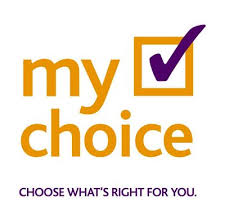Avoid Embarrassment
 One of the reasons bank customers with checking accounts are willing to pay an average of $33 every time they have an overdraft is because they want to avoid embarrassment. Of course, average means that some Overdraft Fees are higher (as much as $39) and some are lower (around $25). Either way, that is a lot of money to give away because you did not have enough money in your checking account to pay for a purchase. Some of you may think that it is worth it to get what you want, especially since you will have the money to bring your checking account back to a positive balance when pay day comes. For some that means the next day, while for others it may be a week or two and several fees later. Whatever the case, it is evident that many people may complain about Non-Sufficient Funds (NSF) and Overdraft Fees but do not do what is necessary to avoid them. Keep reading and hopefully, I can help you to save some money.
One of the reasons bank customers with checking accounts are willing to pay an average of $33 every time they have an overdraft is because they want to avoid embarrassment. Of course, average means that some Overdraft Fees are higher (as much as $39) and some are lower (around $25). Either way, that is a lot of money to give away because you did not have enough money in your checking account to pay for a purchase. Some of you may think that it is worth it to get what you want, especially since you will have the money to bring your checking account back to a positive balance when pay day comes. For some that means the next day, while for others it may be a week or two and several fees later. Whatever the case, it is evident that many people may complain about Non-Sufficient Funds (NSF) and Overdraft Fees but do not do what is necessary to avoid them. Keep reading and hopefully, I can help you to save some money.
 First, you need to know that you have options when it comes to NSF and Overdraft Fees, and you can change your mind anytime. Although the choice to be charged these fees is up to you, several people choose to be charged the fees in case of emergencies. I have discovered that a lot of the time the emergencies are regular occurrences and bad habits that happen more frequently than they should. This results in customers paying hundreds of dollars in fees each month. In fact, banks make tens of billions of dollars each year on NSF and Overdraft Fees alone. Customers with checking accounts could keep some or all of that money in their accounts by making better choices. The first choice is to decide how you want your bank to treat Overdrafts.
First, you need to know that you have options when it comes to NSF and Overdraft Fees, and you can change your mind anytime. Although the choice to be charged these fees is up to you, several people choose to be charged the fees in case of emergencies. I have discovered that a lot of the time the emergencies are regular occurrences and bad habits that happen more frequently than they should. This results in customers paying hundreds of dollars in fees each month. In fact, banks make tens of billions of dollars each year on NSF and Overdraft Fees alone. Customers with checking accounts could keep some or all of that money in their accounts by making better choices. The first choice is to decide how you want your bank to treat Overdrafts.
Here are some of your choices. 1) You can choose to have the bank not allow you to purchase an item if you do not have enough money in your account to pay for the item. And you will not be charged a fee. Of course, that will most likely mean that your debit card is declined in this instance. Would you rather be embarrassed or pay for one, two, or possibly three Overdrafts Fees? 2) If you have a savings account at your bank, you can link it to your checking account. Then if you do not have enough money in your checking account when you try to make a purchase, your bank will transfer the funds from your savings account if there is enough there to cover the NSF amount. You will be charged a fee for the transfer but that is usually minimal compared to the amount of the Overdraft Fee. 3) You can link your checking account to your credit card or a line of credit. Then your bank will transfer the funds to your credit card or line of credit to pay the NSF amount. Again, this is a less expensive alternative than NSF and Overdraft Fees.
 The most important thing to remember is that the choice is yours. You may have chosen to allow Overdrafts when you opened your checking account, but you can change your mind and choose a less expensive option that works for you. You may question what the best option is for you. I think the best Overdraft Protection Plan is Good Money Management. If you know your balance and do not try to outsmart the bank by making a deposit after you have made a purchase but before you are charged a fee, then you will not have to worry about NSF and Overdraft Fees. We all make mistakes every now and then and forget to enter a purchase in our checkbook. That’s understandable. Just try not to make it a bad habit. Instead, you can avoid embarrassing moments and keep money in your pocket by keeping your mind on your money and managing every penny. You won’t regret it. All the best!
The most important thing to remember is that the choice is yours. You may have chosen to allow Overdrafts when you opened your checking account, but you can change your mind and choose a less expensive option that works for you. You may question what the best option is for you. I think the best Overdraft Protection Plan is Good Money Management. If you know your balance and do not try to outsmart the bank by making a deposit after you have made a purchase but before you are charged a fee, then you will not have to worry about NSF and Overdraft Fees. We all make mistakes every now and then and forget to enter a purchase in our checkbook. That’s understandable. Just try not to make it a bad habit. Instead, you can avoid embarrassing moments and keep money in your pocket by keeping your mind on your money and managing every penny. You won’t regret it. All the best!
Click here to get my free eBook: Money Management 101